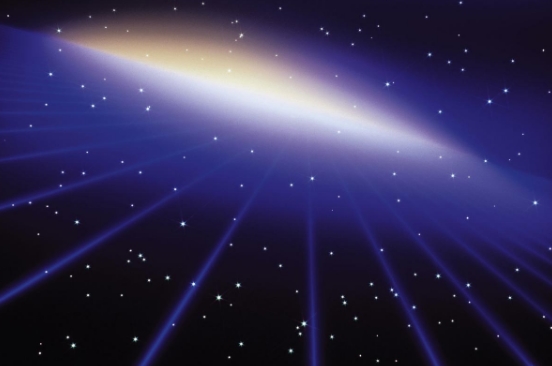“The Earth is a very small stage in a vast, cosmic arena,” wrote the late astronomer Carl Sagan. This sentiment rang true in a recent study, which estimated 92 percent of Earth-like planets have yet to be born.(1)
In turns out Earth arrived early on the scene in the evolutionary history of the universe. According to a new theoretical study, when our solar system burgeoned 4.6 billion years ago, only eight percent of potentially habitable planets existed. The sun is about half-way through its life cycle. But just because Earth, along with the rest of the solar system, will die five billion years from now doesn’t mean the universe will stop churning Earth-like planets. More than 90 percent of Earth-like planets have yet to be born.(1)
This remarkable conclusion was derived from data collected by the Hubble Space Telescope and the Kepler Space observatory:
“Our main motivation was understanding the Earth’s place in the context of the rest of the universe,” said study author Peter Behroozi of the Space Telescope Science Institute (STScI) in Baltimore, Maryland, “Compared to all the planets that will ever form in the universe, the Earth is actually quite early.”(1)
The universe as a time machine
The farther astronomers look back into space, the farther they look back into time. This is because the light emitted from those galaxies takes a longer time to reach Earth. Therefore, when observing a galaxy six billion light-years away, astronomers are observing how that galaxy appeared six billion years ago.
The data collected by the researchers shows that the universe was burning and churning stars at a pretty fast clip 10 billion years ago. Nevertheless, only a fraction of the universe’s hydrogen and helium was exhausted during that process. Stars continue to form from the remaining gas but at a much slower rate than in the past. In fact, there is so much gas still available that the universe will keep cooking up stars, and Earth-life planet, for billions of years.
“There is enough remaining material [after the big bang] to produce even more planets in the future, in the Milky Way and beyond,” co-investigator Molly Peeples of STScI told sources.(1)
Data collected from Kepler’s survey found that Earth-sized planets in the Goldilocks zone, a region of space around stars where the conditions for life are just right, are evenly spread throughout the Milky Way. The data suggest their should be approximately 1 billion Earth-like planets in the galaxy; a good chunk of those planets being rocky. That estimate rapidly increases whenever you consider the 100 billion other galaxies seeded throughout the universe.
The amount of usable energy within the universe is decreasing with time. Nevertheless, the universe still has a lot of energy to use. The universe will continue to spring forth Earth-like planets for another 100 trillion years.
How Earth remains unique
Scientists suspect that future Earth-like planets will emerge in clusters of galaxies and dwarf galaxies, which haven’t exhausted all the gas necessary to build stars and planets. The Milky Way, on the other hand, has used the bulk of its gas necessary for star formation.
Although there are many Earth-like planets to come, our planet is unique in one respect: we live in a time where we are capable of tracing the evolution of the universe back to the big bang. Whenever distant Earth-like planets emerge, galaxies will be spread so far apart that their won’t be enough time for light traveling from one galaxy to reach the nearest galaxy. In other words, future civilizations will be under the false impression that the galaxy they reside in encompasses the entire universe.
And in this respect, Earth remains unique.
Sources include:
(1)Mnnras.OxfordJournals.org
















